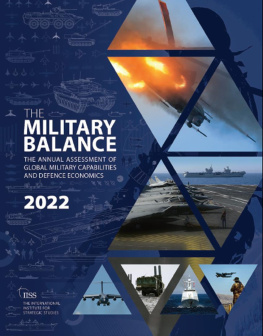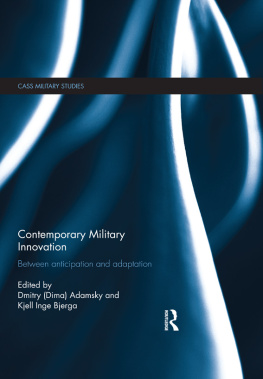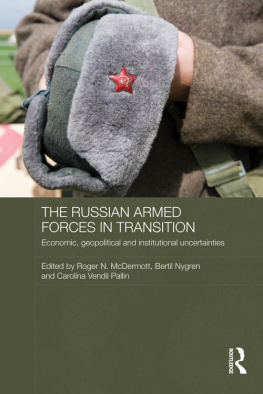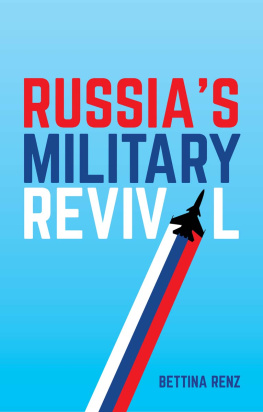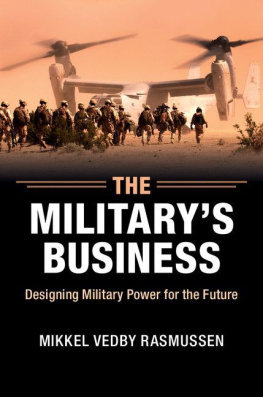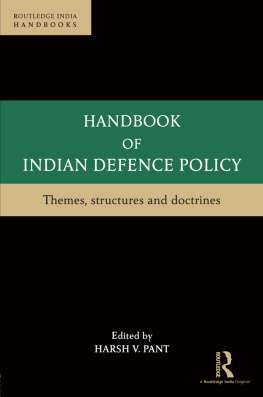Contents
Page List
Guide

THE
MILITARY BALANCE
2022
THE MILITARY BALANCE 2022 The International Institute for Strategic Studies ARUNDEL HOUSE | 6 TEMPLE PLACE | LONDON | WC2R 2PG | UK DIRECTOR-GENERAL AND CHIEF EXECUTIVE
Dr John Chipman DIRECTOR FOR DEFENCE AND MILITARY ANALYSIS
Dr Bastian Giegerich EDITOR
James Hackett ASSOCIATE EDITOR
Natalia Forrest MILITARY AEROSPACE
Douglas Barrie MRAeS LAND WARFARE
Brigadier (Retd) Benjamin Barry MILITARY FORCES AND EQUIPMENT
Henry Boyd NAVAL FORCES AND MARITIME SECURITY
Nick Childs DEFENCE ECONOMICS
Fenella McGerty RESEARCH AND ANALYSIS
Jonathan Bentham, Charlotte Le Breton, Hugo Decis, Joseph Dempsey, Haena Jo, Amanda Lapo, Yohann Michel, Alienor le Mire-Cahn, Robert Mitchell, Meia Nouwens, Dr Simona Soare, Michael Tong, Tom Waldwyn, Timothy Wright EDITORIAL
Flora Bell, Gregory Brooks, Mubasil Chaudhry, Katie Holland, Graham Ivory, Kevin Jewell, Jill Lally, Jack May, Michael Marsden DESIGN, PRODUCTION, INFORMATION GRAPHICS
John Buck, Carolina Vargas, Kelly Verity CARTOGRAPHY
John Buck, Carolina Vargas, Kelly Verity RESEARCH SUPPORT
Franz-Stefan Gady, Yuka Koshino, Ben Papworth, Erica Pepe, Christie Soo, Kai-Lin Tay This publication has been prepared by the Director-General and Chief Executive of the Institute and his Staff, who accept full responsibility for its contents. The views expressed herein do not, and indeed cannot, represent a consensus of views among the worldwide membership of the Institute as a whole. FIRST PUBLISHED February 2022 The International Institute for Strategic Studies 2022 All rights reserved. No part of this publication may be reproduced, stored, transmitted, or disseminated, in any form, or by any means, without prior written permission from Taylor & Francis, to whom all requests to reproduce copyright material should be directed, in writing. ISBN 978-1-032-27900-8 ISSN 0459-7222 Cover images: Mi-24 attack helicopter at the
Zapad 2021 exercise (Sergei Savostyanov/TASS via Getty); Exercise
Gallic Strike (Christophe Simon/AFP via Getty); A Y-20 aircraft at Airshow China 2021 (Yue Shuhua/VCG via Getty);
Bastion missile system at Nagurskoye (Alexander Zemlianichenko/AP/Shutterstock);
Joint Sea 2021 exercise (Sun Zifa/China News Service via Getty); A C-17 aircraft departs Kabul (Marcus Yam/LA Times via Getty); US Marine Corps F-35B lands on JS
Izumo (US Marine Corps/Lance Cpl. Tyler Harmon);
Maritime Partnership Exercise 2021 (US Navy/Russell Lindsey); Self-propelled artillery at the
Zapad 2021 exercise (Alexey Kudenko/Sputnik via AP)
The Military Balance (ISSN 0459-7222) is published annually by Routledge Journals, an imprint of Taylor & Francis, 4 Park Square, Milton Park, Abingdon, Oxfordshire OX14 4RN, UK.
A subscription to the institution print edition, ISSN 0459-7222, includes free access for any number of concurrent users across a local area network to the online edition, ISSN 1479-9022. All subscriptions are payable in advance and all rates include postage. Journals are sent by air to the USA, Canada, Mexico, India, Japan and Australasia. Subscriptions are entered on an annual basis, i.e. January to December. Payment may be made by sterling cheque, dollar cheque, international money order, National Giro, or credit card (Amex, Visa, Mastercard).
Please send subscription orders to: USA/Canada: Taylor & Francis Inc., Journals Department, 530 Walnut Street, Suite 850, Philadelphia, PA 19106, USA. UK/Europe/Rest of World: Routledge Journals, T&F Customer Services, T&F Informa UK Ltd., Sheepen Place, Colchester, Essex, CO3 3LP, UK. Email:
Contents
Index of FIGURE
North AmericaEuropeRussia and EurasiaAsiaMiddle East and North AfricaLatin America and the CaribbeanSub-Saharan AfricaMilitary cyber capabilities Index of MAPS
Two years into the coronavirus pandemic, armed forces across the world continue to support public health measures. This support is likely to persist if new COVID-19 variants emerge. Nonetheless, in 2021 many armed forces sought to resume activities that had been affected by the pandemic. Military training and exercises adapted to become COVID-secure, to the extent that was possible, and large-scale deployments resumed, such as the UK-led Carrier Strike Group 21.
However, infection risks remained as armed forces grappled with introducing vaccinations and other preventive measures: COVID could still undermine operational readiness. At the same time, as in 2020, there was no reduction in conflict or confrontation. Heightened perceptions of great-power competition still motivated many countries defence-planning considerations and influenced important procurement decisions. Persistent conflicts remained unresolved. In Africa, France moved to reshape its involvement in the Sahel, focusing its military presence around the Takuba counter-terrorist mission, while elsewhere, war in Ethiopia and insurgency in Mozambique provoked concern. In the Middle East, wars in Libya, Syria and Yemen continued, even if a combination of fatigue and stalemate led to tentative de-escalation.
Middle Eastern states also awaited decisions on future US force dispositions. In 2021 the US withdrew missile-defence batteries, and the Biden administration has said it would right-size the US regional presence. Specific details, however, remained scant in advance of the National Security Strategy, expected in 2022. Moreover, reports of the conclusions of the Global Posture Review contained little firm detail other than the ambition to develop a more robust presence in both the Indo-Pacific and Europe. This was linked to the administrations Interim National Security Strategic Guidance, which said the US would end forever wars. Bidens election brought expectations for improved transatlantic ties.
However, the manner of the US withdrawal from Afghanistan and the knowledge among European states that they lacked the military capability to do anything but follow Washingtons decision dampened hopes for a strengthened relationship, particularly when viewed alongside the diplomatic fallout in Europe from the announcement in September of the AUKUS arrangement. Despite unifying rhetoric, European allies were still expected to do more for their own defence. It is likely that this will be reflected in NATOs new Strategic Concept and in the EUs so-called Strategic Compass.
Defence spending
Nonetheless, it is clear that European states have turned a corner in terms of their defence spending, since Russias annexation of Crimea in 2014 and subsequent military intervention in eastern Ukraine upended the continents security landscape. In 2021, European defence spending grew by 4.8% in real terms, more than in any other region. This marked the seventh consecutive year of real-terms growth.
The 2021 increase, combined with reduced spending in other regions, means that European spending represented 18.7% of the global total, after hovering between 16.5% and 17% annually since 2014. The continued upward trajectory of European defence spending reflects sharpened threat perceptions. Moreover, this higher European spending is adjusted for inflation; elsewhere, surging inflation has reduced the effect of nominal defence-budget increases. Indeed, while global spending rose again in 2021, reaching USD1.92 trillion 3.4% higher than in 2020 inflation in all regions meant this amounted to a 1.8% reduction in real terms. There were real-terms spending contractions in Latin America, sub-Saharan Africa, the Middle East and North Africa and in Russia and Eurasia, even though nominal increases were evident across most regions. In real terms, spending in Latin America largely insulated from any major threat is at the same level as in 2009.

